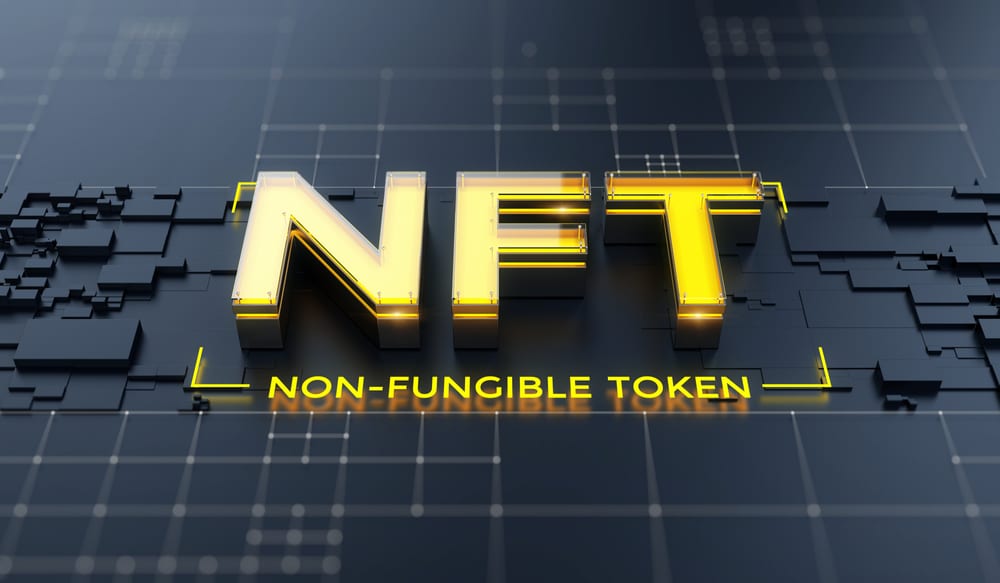The Ultimate Guide to Cryptocurrency Hardware Wallets

In the realm of digital currencies, ensuring security is paramount. As digital assets gain traction, the demand for reliable storage methods has surged, highlighting the role of hardware wallets.
A hardware wallet is a tangible device designed to safeguard your private keys, facilitating the secure management of your digital currency assets. This guide delves into the essence of a hardware wallet, its operational mechanism, and the methods to utilize to protect your digital holdings.
Benefits of hardware wallets in digital currency protection
Hardware wallets present notable benefits concerning digital currency safety. Contrary to hot wallets, which maintain constant internet connectivity and are thus susceptible to cyber threats, hardware wallets offer an isolated storage method, commonly termed “cold storage.” This disconnected characteristic of hardware wallets considerably diminishes hacking and theft risks.
Moreover, hardware wallets can introduce an additional security tier via pin codes, necessitating manual device verification for every transaction. This augmented security measure fortifies hardware wallets against both virtual and tangible theft.
Utilizing a hardware wallet grants you complete authority over your private keys and, consequently, your digital currencies. This starkly contrasts with depositing your digital currencies on trading platforms, where you delegate the safety of your holdings to an external entity.
Although they are an isolated storage medium, hardware wallets are surprisingly user-friendly. Their compact design, portability, and ease of connection to computers or mobile gadgets for transaction purposes are commendable. After completing a transaction, the wallet can be disconnected and stored securely. This blend of safety, autonomy, and user-friendliness positions hardware wallets as a prime choice for digital currency storage.
Surveying the array of hardware wallets on offer
Several esteemed brands provide hardware wallets, each with distinct security levels, functionalities, and user experiences. Ledger and Trezor are among the most recognized names.
Ledger’s premier offering, the Ledger Nano X, is a sleek device compatible with numerous digital currencies. It boasts advanced security measures, including an integrated screen for transaction verification and PIN protection.
Trezor, another distinguished name, presents the Trezor Model One and Trezor Model T. Both are lauded for their stringent security measures and intuitive interfaces. The Model T is especially notable for its touchscreen feature, which enhances user interaction.
Other noteworthy hardware wallet manufacturers encompass Ellipal, CoolWallet, SafePal, and Ngrave. Each brand introduces distinct attributes tailored to varied user inclinations. For example, CoolWallet is a card-sized gadget with an integrated display for wallet storage.
Configuring your hardware wallet
Initializing a hardware wallet might appear daunting for those unfamiliar with digital currencies. Yet, the procedure is typically straightforward and user-centric.
Upon acquiring your hardware wallet, you must install the associated software on your computing or mobile device. Typically supplied by the manufacturer, this software facilitates interaction with your hardware wallet.
Based on the specific model, the wallet will guide you to establish a PIN or passphrase, which is essential for security. A backup recovery seed phrase, a sequence of words vital for wallet recovery in case of loss or damage, will likely be provided. It’s imperative to store this offline in a secure location. Post these preliminary steps, you can commence transferring funds to your hardware wallet.
The software interface will offer options to deposit or transfer digital currencies. For deposits, replicate the public address shown or scan the QR code to transfer the requisite digital currency amount from a trading platform or wallet.
To dispatch digital currencies from your hardware wallet, input the beneficiary’s address and the intended amount, then validate the transaction on the hardware wallet display.
The concluding step involves transaction authentication. Post transaction detail verification on your hardware wallet, and you’ll be prompted for your PIN or passphrase. The hardware wallet subsequently authorizes the transaction using the internal private key, executing the transaction.
After finalizing your transactions, it’s prudent to disconnect the hardware wallet and store it in a secure location.
Secure Cryptocurrency Storage: A Guide to Hardware Wallet Practices
A crucial element in effectively using a hardware wallet is carefully handling and safeguarding your private keys and recovery seed phrase.
Each hardware wallet has a private key, the gateway to your digital assets. These keys must remain confidential, as they grant complete control over your holdings. Similarly, the recovery seed phrase, which consists of 12 to 24 words, is essential for restoring your wallet in case of loss or a forgotten pin. It’s advisable to note this phrase and keep it in a protected, offline environment.
Another vital consideration for securely storing your digital assets is to update the wallet’s firmware consistently. Hardware wallet producers often introduce updates to enhance security protocols and rectify potential weak points. Keeping your hardware wallet firmware up-to-date ensures it benefits from the most recent protective measures.
Nevertheless, before applying any updates, it’s essential to confirm the authenticity of the update source to prevent succumbing to deceptive schemes.
The tangible protection of your hardware wallet must be noticed. Since hardware wallets are tangible items, they are susceptible to theft, misplacement, or damage. Hence, placing your hardware wallet in a fortified location when inactive is prudent.
Many opt to safeguard their wallets in vaults or safety deposit boxes. Additionally, pondering tamper-proof seals on your hardware wallet can be beneficial in detecting any unsanctioned access attempts.
Troubleshooting Guidelines for Hardware Wallet Patrons
Although hardware wallets are celebrated for their robust security features, users occasionally face operational challenges. Here are some general solutions.
If your PC or mobile apparatus doesn’t acknowledge your hardware wallet, you should test another USB port or cord or ascertain the device’s compatibility with the wallet.
Ensuring that the wallet’s firmware is current is paramount regarding transaction-related issues.
Challenges in displaying your balance might stem from a misalignment between the wallet application and the blockchain. A simple refresh of the wallet application or a device reboot typically rectifies this.
It’s pivotal to understand that your digital assets reside on the blockchain and not the wallet; the device merely possesses the keys for access. Thus, your assets remain intact even if your balance isn’t visible, provided your private keys are safeguarded.
Misplacing your PIN or recovery seed phrase can pose challenges since they are vital for accessing your digital assets. Some wallets provide a reset feature in case of a forgotten PIN, which necessitates the recovery seed phrase.
If your PIN and seed phrase are recovered, there must be a mechanism to retrieve your wallet or its contents, underscoring the significance of diligent storage and recall.
In scenarios where the wallet is lost or compromised, your digital assets can be restored on a new device of identical make using your seed phrase. It’s paramount to procure hardware wallets from trustworthy vendors to circumvent devices that might have been altered or preset.
Always remain vigilant against deceptive tactics and maintain the confidentiality of your PIN and seed phrase.
Ensuring the Physical and Digital Safety of Your Hardware Wallet
Establishing robust strategies that guarantee your hardware wallet’s physical and digital safety is paramount, shielding it from potential damage and unauthorized access.
When not in active use, the physical storage of your hardware wallet demands a secure location, such as a locked compartment, a residential safe, or a bank’s safety deposit box. Employing tamper-evident seals can be an additional measure to swiftly detect unauthorized access attempts while ensuring that the device is not subjected to adverse environmental conditions, such as extreme temperatures or moisture.
In terms of theft prevention, exercising discretion is vital. Refrain from disclosing the whereabouts of your hardware wallet on public platforms or social media to mitigate the risk of intentional theft. Adhering to the principle of “security through obscurity” — ensuring minimal knowledge among people about the existence and location of your hardware wallet — enhances its safety.
Employing a decoy wallet containing a minimal amount of cryptocurrency alongside your primary wallet can serve as a safeguard in high-pressure situations, potentially shielding your main assets.
Digitally, the utmost confidentiality of your PIN and passphrase is crucial. These should remain undisclosed to others and, ideally, should not be digitally stored where they might be vulnerable to unauthorized access.
The Evolution of Hardware Wallets
Anticipating the future trajectory of hardware wallets, a myriad of progress and innovations is expected, all aimed at bolstering the security of cryptocurrency.
The escalating demand for hardware wallets that are not only secure but also user-friendly and versatile is being addressed by industry stakeholders. Numerous manufacturers of hardware wallets are exploring incorporating biometric authentication methods, such as fingerprint or facial recognition, to add an extra security layer.
Integrating such biometric features would further complicate unauthorized access to a user’s wallet, even if others physically acquire the device.
Hardware wallets of the next generation are also anticipated to provide enhanced support for an expanded array of cryptocurrencies and blockchain networks.
Moreover, with the continuous expansion of decentralized finance, hardware wallets may offer more streamlined integration with DeFi applications and protocols, enabling users to engage with DeFi platforms directly through their hardware wallets, thereby augmenting the convenience and security of transactions.
Potential innovations include the creation of hardware wallets with improved user interfaces, facilitating more straightforward navigation and enhanced intuitiveness for users through more extensive, more apparent displays, touch-sensitive controls, or voice-activated commands.
As hardware wallets become more advanced, incorporating features like wireless connectivity, enabling users to manage their cryptocurrency assets mobility without connecting their device to a computer, they also introduce new challenges and risks. The evolving tactics of hackers and cybercriminals will invariably match the sophistication of hardware wallets.
DISCLAIMER: It's essential to understand that the articles on this site are not meant to serve as, nor should it be construed as, advice in legal, tax, investment, financial, or any other professional context. You should only invest an amount that you are prepared to lose, and it's advisable to consult with an independent financial expert if you're uncertain. To obtain more information, kindly examine the terms of service and the assistance and support resources made available by the issuing or advertising entity. Our website is committed to delivering accurate and unbiased news, yet it's important to note that market conditions may change rapidly. Also, be aware that some (but not all) articles on our site are compensated or sponsored.








